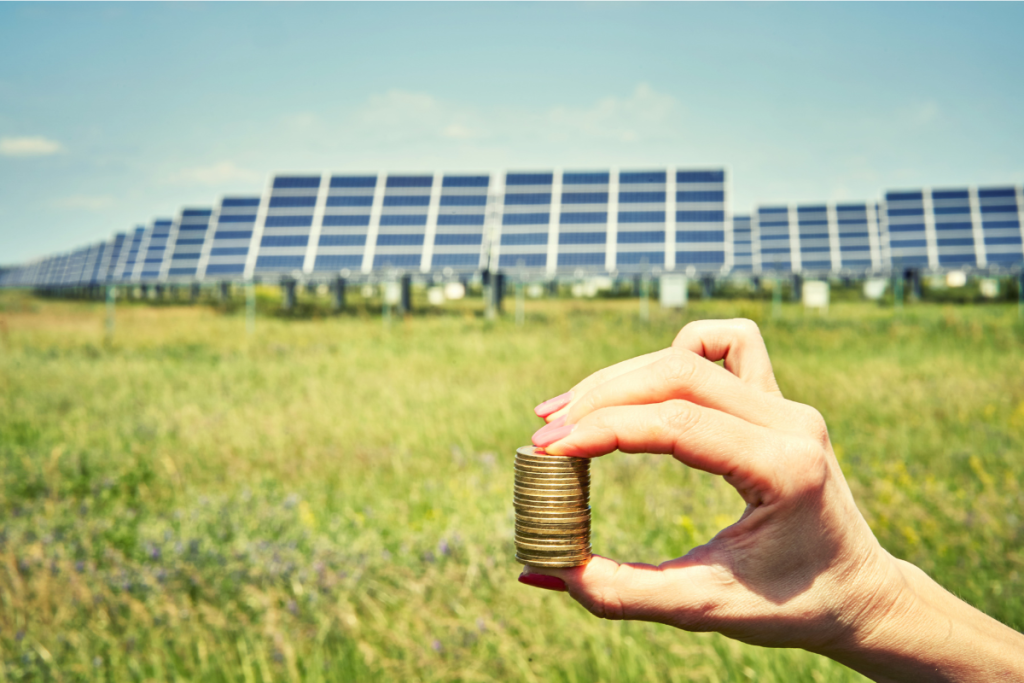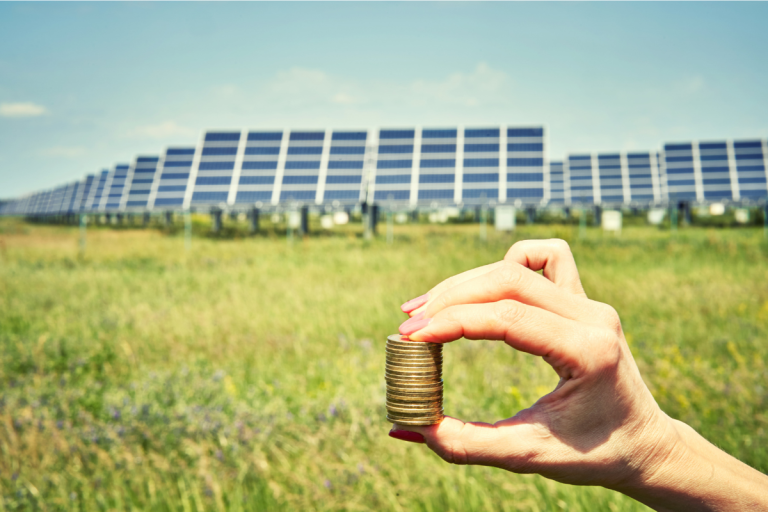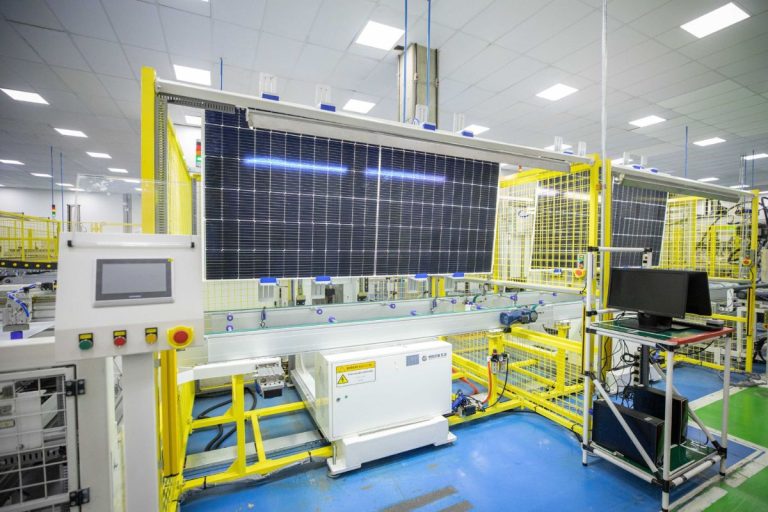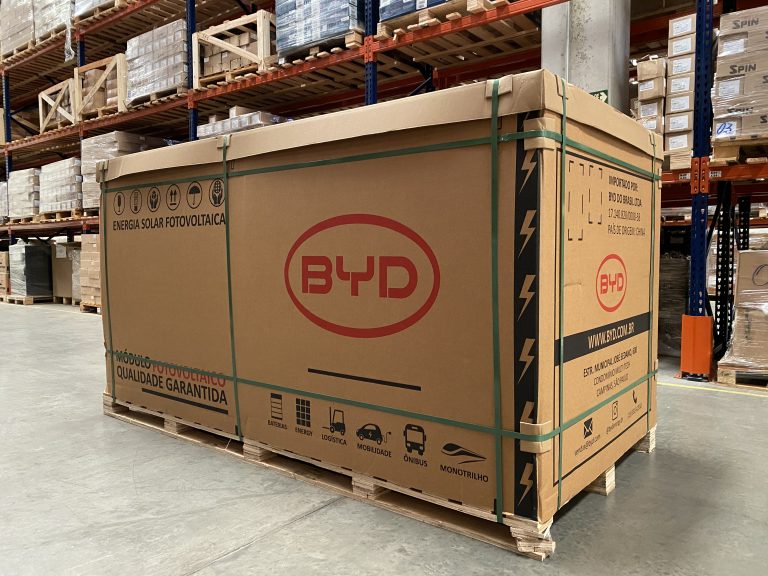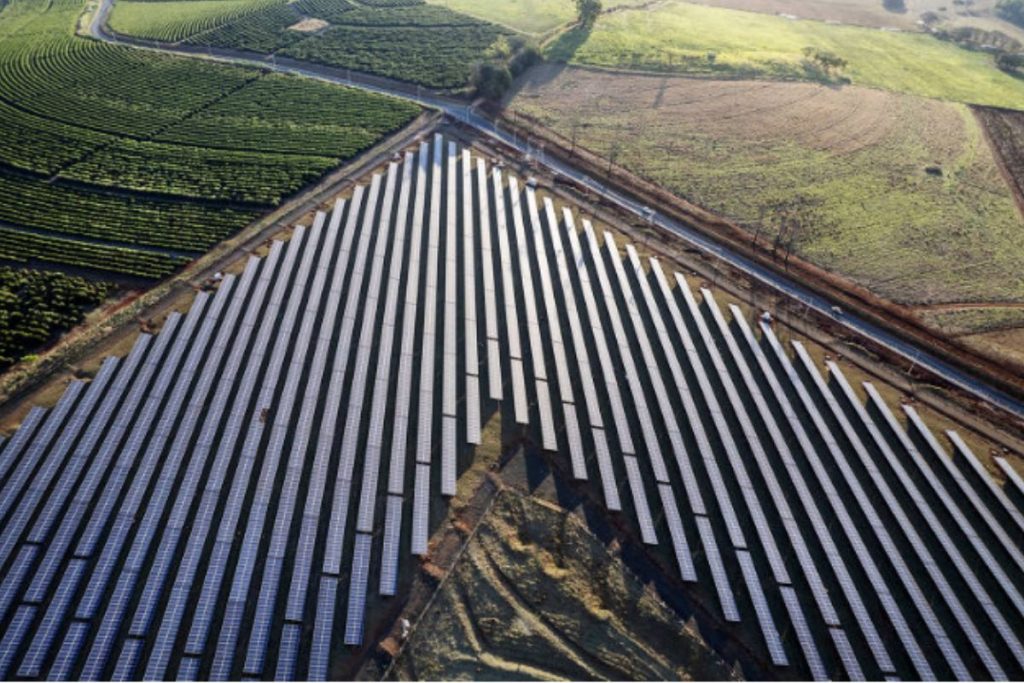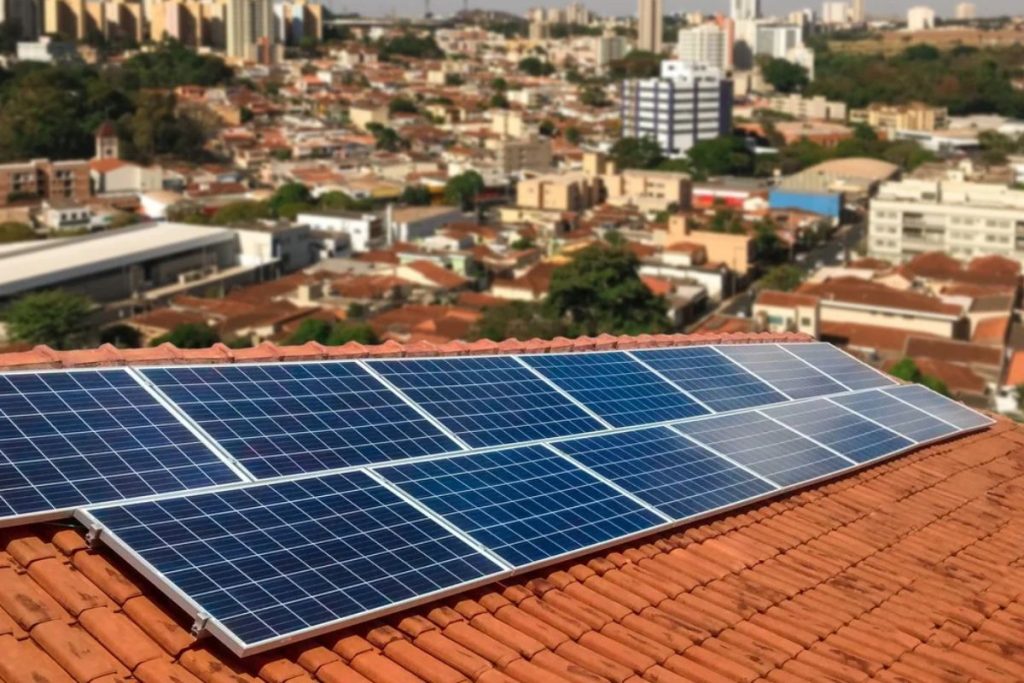O value of solar energy goes far beyond the price of installation. It's an investment that brings lasting financial benefits and also helps to reduce environmental impact. Imagine harnessing sunlight to lower your energy bills while contributing to a more sustainable future.
Understanding the costs and what influences the price of a photovoltaic solar energy system is the first step towards making an informed decision. From the size of the system to the quality of the equipment and the location, several factors come into play.
Here, you'll get a practical overview of the costs involved and understand why photovoltaic solar energy is a worthwhile choice.
How much does solar energy cost in Brazil?
The costs of a solar energy in Brazil vary significantly, influenced by the type of use (residential, commercial or industrial). To understand this better, let's look at some practical examples:
- Homes: a residential solar energy system for a house with an average consumption of 300 kWh per month can cost between R$ 20 thousand and R$ 30 thousand. This includes photovoltaic modules, inverter and complete installation. The investment pays for itself in around 5 to 8 years, but depending on your consumption and region, the payback may be shorter.
- Businessesfor businesses, with higher energy consumption, the systems usually cost from R$ 40,000 to R$ 80,000, depending on the size of the business. A restaurant, for example, can save a lot on your electricity bill with a suitable system. O payback for businesses, in general, can vary between 4 and 7 years.
- Industries: industrial systems, for high energy demand, cost from R$ 100,000 and can reach R$ 1 million or more for large factories. The investment pays for itself over a period of 3 to 6 years, depending on scale and consumption.
It is important to note that the figures above already include the hiring of specialized labor for the design, sizing and installation of the photovoltaic system. BYD has a wide network of partners throughout Brazil who can help you with a complete quote, including the BYD photovoltaic kit and specialized labor.
Although they may seem significant at first, the savings generated on electricity bills and the long-term benefits make a photovoltaic solar energy system an investment with a guaranteed return. This model is becoming increasingly accessible and advantageous for all sectors.
What is the average cost of a photovoltaic kit?
The cost of a photovoltaic kit can vary widely depending on several factors, such as the capacity of the system, the quality of the components, the brand, and the geographical location.
Photovoltaic kits consist of solar panels, inverters, mounting structures, cables and other accessories needed to install and operate the system.
For a medium-sized home, the cost of a photovoltaic kit in Brazil generally ranges from R$ 15,000 to R$ 30,000. This range is based on the size of the system needed to meet the home's energy consumption and the complexity of the installation.
Smaller kits, designed for partial consumption reduction, can cost less, while larger systems, which aim to cover all consumption or are intended for commercial developments, can be significantly more expensive, exceeding R$ 50,000.
It is worth noting that, in addition to the initial cost, there may be tax incentives and specific financing for renewable energies that can make the installation of solar systems more affordable.
It's important to consider not only the immediate cost, but also the long-term return on investment, as generating your own energy can lead to significant savings on your electricity bill over the years.
Factors that influence the value of solar energy
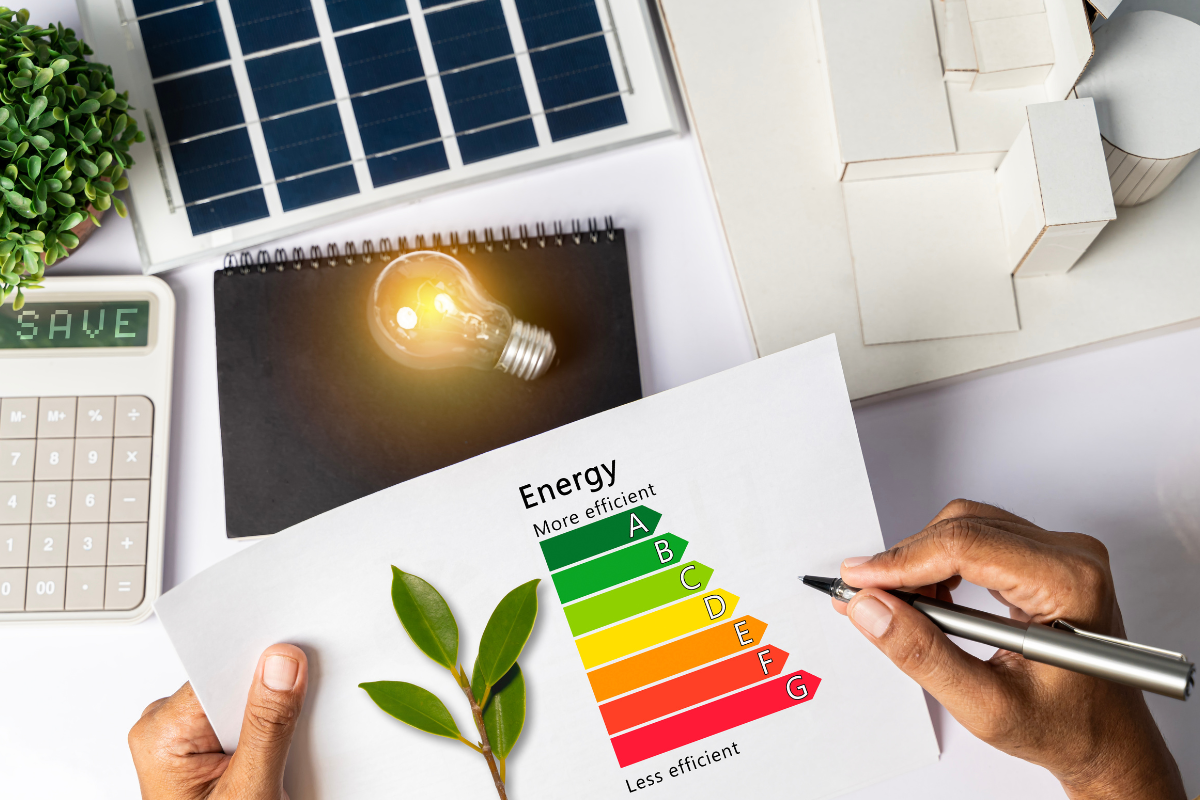
The cost of a photovoltaic solar energy system is influenced by various factors, such as location and the quality of the equipment used. Larger systems, designed to meet higher energy demands, will naturally have a higher initial cost.
However, it is important to note that these systems also provide significant savings in the long term, offsetting the initial investment.
The location of the property also plays an important role in determining the cost. Regions with high solar incidence, such as the Northeast of Brazil, generally require fewer photovoltaic modules (or solar panels) to generate the same amount of energy as less sunny areas. This can result in a reduction in the total cost of the system.
Transportation and installation costs may vary depending on the distance between the supplier and the installation site.
The quality of the photovoltaic kit, which includes modules, invertersThe price and performance of the system is directly affected by the quality of the products, such as the fixing structures, cabling, connectors and protection devices. Opting for high-quality products, such as those offered by BYD, can result in a slightly higher initial investment.
However, BYD is renowned for the durability and efficiency of its equipment, which translates into greater energy generation, less need for maintenance and, consequently, greater savings in the long term. BYD's photovoltaic modules, for example, are designed to offer high performance even in adverse weather conditions, guaranteeing a reliable and consistent energy supply.
When choosing a solar energy system, it is crucial to consider not only the initial cost, but also the quality and durability of the equipment. Investing in high-quality products, such as those from BYD, can be the key to maximizing the return on investment and ensuring a more sustainable and economical energy future.
Other costs in a solar energy project
In addition to investing in photovoltaic kitThe installation of a solar energy system can involve other specific costs that need to be considered in order to plan thoroughly and avoid budget surprises.
These additional costs are related to the structure of the site, the structure of the electrical network and licenses, and may or may not be necessary depending on the reality of each installation.
Below, we detail each of these costs:
1. adapting the power input standard
What it is: modifications to the property's energy input standard, such as changing the meter clock, to adapt it to the photovoltaic system.
Why it's important: necessary to ensure the correct measurement of the energy generated and consumed, as well as complying with the standards of the energy concessionaire.
This cost may not be included in the initial quote, so it's important to check with the integrator.
2. Structural report
What it is: assessment of the roof structure by an engineer to ensure that it will support the weight of the solar panels.
Why it's important: safety first. It avoids problems such as infiltration and damage to the structure of the property.
This may be necessary in some cases, depending on the type of roof and the number of panels. It is important to check this with the integrator.
3. Adjustments to the concessionaire's network
What it is: Modifications to the utility's electricity grid to allow the injection of energy generated by the photovoltaic system.
Why it's important: It guarantees the safe and efficient connection of the system to the electricity grid, allowing energy credits to be used.
This can generate additional costs and even the need for work on the network, depending on the region and the power injection capacity. It is essential to check this with the utility company.
4. Licenses and permits
What it is: Obtaining environmental licenses and access reports from the concessionaire, especially for large plants.
Why it's important: It legalizes the installation of the system and guarantees compliance with standards and regulations.
The costs and deadlines for obtaining licenses can vary. It is important to find out in advance.
It is crucial to have a detailed plan before starting the installation of the photovoltaic system. Check with the integrator which costs are included in the budget and which may be additional.
Be sure to ask about the need for a structural report, grid adjustments and licenses. This way, you can avoid unforeseen problems and ensure that your investment in solar energy is a success.
Savings generated by solar energy
In Brazil, a solar energy system usually pays for itself in a period of between 3 and 8 years. This period, known as payback, depends on various factors, such as energy consumption, geographical location and the cost of the system. After the payback period, most of the energy generated is practically free, with minimal maintenance costs.
To illustrate, let's consider a household with an electricity bill of R$ 500.00 per month. After installing a solar energy system, this bill can be reduced to around R$ 50.00 per month, representing a saving of R$ 450.00 per month or R$ 5,400.00 per year.
How much does it cost on average to install solar energy in Brazil?
Installing a solar energy system in Brazil represents a significant investment, but it also offers the opportunity to save a lot in the long term.
On average, for an average household looking to cover its daily energy demand, the costs can vary between R$ 15,000 and R$ 40,000. This includes all the essential components, such as the solar panels, inverters, mounting structures and the installation itself, which is carried out by qualified professionals.
For larger commercial establishments or homes, the figures can be higher, exceeding R$ 50,000, depending on the size of the system needed to meet the particular energy consumption of each situation. Although this initial amount may seem high, it is often offset over the years by a significant reduction in electricity bills.
In addition, there are some initiatives in Brazil that facilitate this transition, such as special financing for renewable energies and tax exemptions that may vary depending on the state. In the medium and long term, the financial return combined with the contribution to a more sustainable environment makes this choice not only an economic investment, but also a conscious and strategic one.
Calculating payback (return on investment)
To calculate the paybackwe need some information:
- Cost of the system: let's assume that the solar energy system cost R$ 25,000.00.
- Annual savings: according to the example above, the annual saving is R$ 5,400.00.
Now we can calculate the payback:
Payback (years) = System Cost / Annual Savings
- Payback = R$ 25,000.00 / R$ 5,400.00
- Payback ≈ 4.6 years
In this example, the solar energy system would pay for itself in approximately 4.6 years.
It's important to remember that the payback can vary depending on factors such as solar incidence in the region, the price of electricity and the tax incentives available.
Solar energy is a smart investment that provides significant savings over the long term. The payback may vary, but after this period, the energy generated is practically free, making your investment even more worthwhile.
Finance the value of solar energy
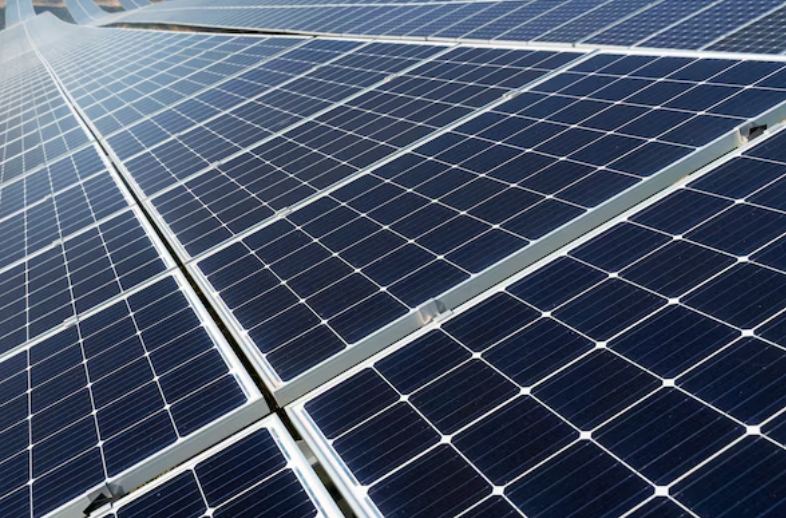
Solar energy is becoming increasingly accessible, and government funding and incentives play a key role in this democratization.
Nowadays, there are several credit options that make it easy to pay for your solar energy system in installments, with conditions that fit perfectly into your budget.
One of the highlights is the financing offered by Santander in partnership with BYD. With terms of up to 120 months and low interest rates, this line of credit makes it possible to purchase a solar energy system without compromising your finances.
O BNDES also offers credit lines for renewable energy projects, including solar energy, with special conditions for companies and rural producers.
This financing makes value of solar energy more affordable and viable for everyone, offering a significant financial return over time. Want to know more about how BYD can help transform your consumption into clean, affordable energy?

